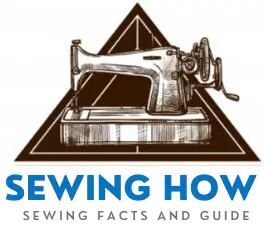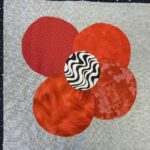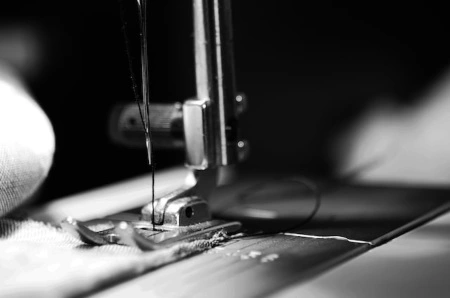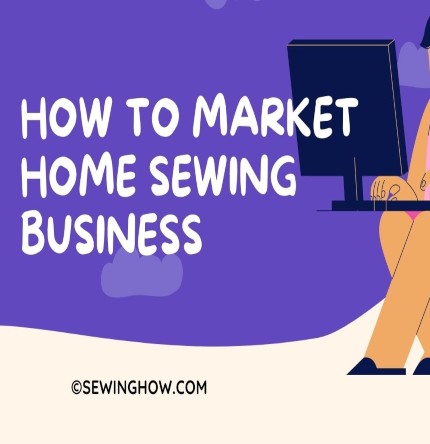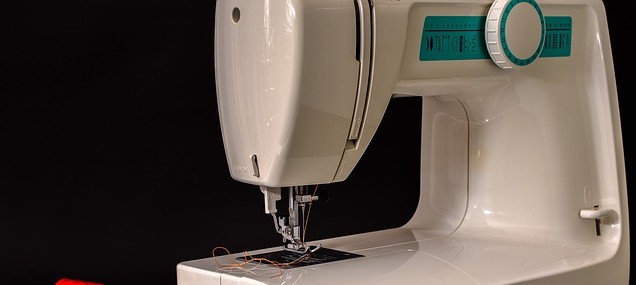Whether you have been sewing for a long time, just started sewing, or are planning to start, buying a computerized digital sewing machine is likely to have closed your mind.
We will look at this type of sewing machine in detail to have a better understanding of whether the digital sewing machine is worth the cost and whether you should buy it to replace your existing mechanical sewing machine if you already have one.
Digital sewing machines have become popular as they have several advantages over normal ones. For instance, they are fast and can complete sewing projects faster than a normal mechanical sewing machine.
What Is A Digital Computerized Sewing Machine?
A digital sewing machine is also referred to as a computerized sewing machine. This machine is different from the old normal sewing machine in various ways. One of the notable differences is that the control unit of the digital sewing machine is powered and controlled by a computer system. For that reason, the machine is also known as a computerized sewing machine.
When using a computerized sewing machine, the sewing configuration is mainly through the small display monitor on the machine. You can control different features of your sewing from the monitor, such as the tension, the stitching pattern, the feed dog, and the needle bar, among others. You can accurately specify how you want your stitching to be through those settings.
It is important to note that even if you enjoy accurate configurations, the extent to which those settings apply to your sewing projects is limited to the specified number of designs incorporated in your sewing machine. However, in some advanced computerized sewing machines, the machines are compatible with personal computers. With such machines, you can connect the machine to the computer and transfer your preferred sewing designs from your computer to the digitized sewing machine.
Due to that feature, computerized sewing machines have become popular with those working on innovative sewing designs.
How Do Computerized Digital Sewing Machines Work?
A digital sewing machine has a similar function to a normal sewing machine. The major difference is that the onboard computer is controlled by a small monitor programmed by the digital sewing machine. Thus, while you have to set everything in the normal sewing machine manually, all you need to do with a digital machine is to set your preferred settings and use the specific settings when you are sewing.
Everything else is left to the machine with a digital machine once you have input your sewing settings.
Do I Need Training To Use A Computerized Sewing Machine?
You don’t need any formal training to use a computerized sewing machine. However, it would help if you have regular practice with the machine, and you will soon get used to it.
The only notable difference between a computerized and a normal sewing machine is that sewing in the digital machine is computerized. In contrast, you have to control the actual sewing manually in a normal machine.
A computerized sewing machine is classified as a home appliance whose role is to simplify our daily tasks. Thus, the manufacturers of various brands of digital sewing machines expect that you will be able to configure the machine and use it as you wish by reading the sewing machine’s manual.
However, if you have no sewing experience, you might find it a challenge to operate the machine independently for the first time. In such situations, you can ask a friend who already has a computerized sewing machine to help you set up the machine or take your time and read the manual in detail – you will get used to it in a short time.
After Setting Up The Computerized Sewing Machine, Is It Easy To Use?
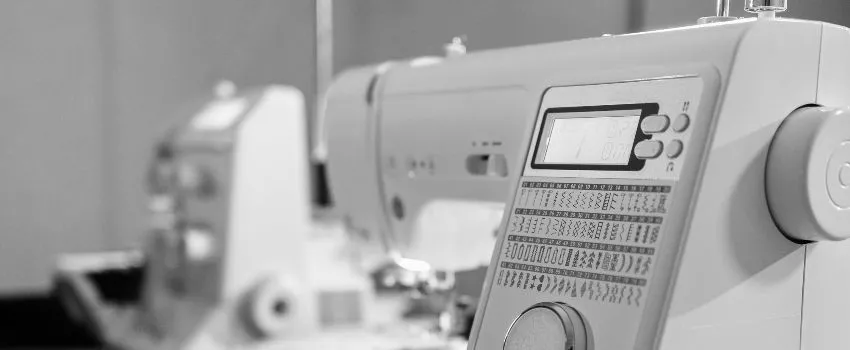
Yes, a digital sewing machine is easier to use than a regular one.
The digital machine makes your sewing experience better and less tasking than a household appliance.
However, if you are considering buying a computerized sewing machine for your parents or grandma, it is recommended that you have someone to guide them on how to use the machine for the first time to gain confidence in the machine. You can also set the preferred sewing settings on the machine’s memory so that they can use the machine for a long time without being bothered about how to set the machine.
Computerized Sewing Machines And Apple Mac PCs
Normally, most Mac Pcs have been configured to only work with Apple (Mac Manufacturer) products. However, manufacturers of various devices have innovated and developed their products to be paired with computers running different operating systems.
For the digital sewing machines, Brother SE 400 is known to be compatible with Mac Pcs and other operating systems such as Windows and Linux. For this model, you can use the connection cable that it comes with to connect it with your computer. Once the connection is ready, you can easily drag or copy and paste the file to the computerized sewing machine. You must drag the file to the sewing machine’s memory in the required format – in many machines, PES format is used.
If you connect your digital sewing machine with a Windows-powered computer, the connection process should be the same as a Mac OS-powered computer. One of the common connection issues when connecting a digital sewing machine with a computer entails not having a successful connection.
Mainly, that issue is solved by ensuring that the sewing machine’s drivers are successfully installed on the computer. Then, you can easily download the drivers from the sewing machine manufacturer’s website.
How Does The Foot Pedal Of The Computerized Sewing Machine Work?
In any sewing machine, the role of the foot pedal is to set the speed at which you will sew the stitches on the fabric. Thus, the harder the foot pedal is pressed, the faster the needle works.
Most computerized sewing machines have a foot pedal that also controls the speed of the needle. However, it is not a must for you to use the foot pedal as the machine does not really need the pedal. Instead, the start and stop buttons of the machine are enough to command the machine when to start sewing and when to stop.
Indeed, on the display monitor of the computerized sewing machine, you can set the speed of the stitches, and once you have set that, you no longer need to use your foot pedal. Thus, the digital sewing machine could be your best option if you do not want to use a foot pedal for various reasons, such as your feet hurting whenever you place the feet on the foot pedal.
Sewing With A Computerized Sewing Machine
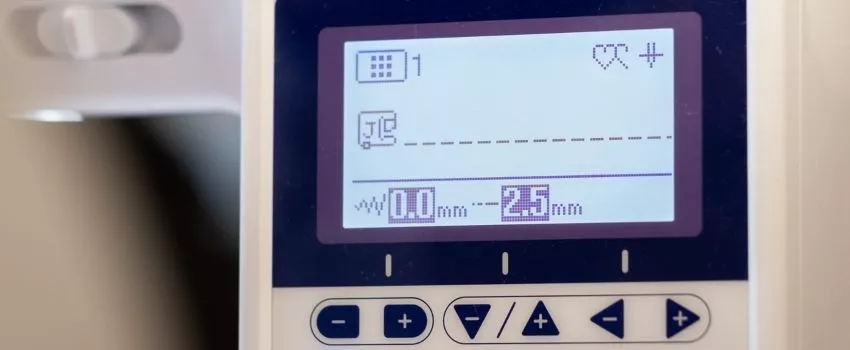
You have probably bought a computerized sewing machine, or you are planning to buy it soon. Here is a simple guide on how you will start sewing with your new sewing machine.
Step 1: Unboxing and Installing
The first thing to do is get the sewing machine out of the box and install it. Installation in this context involves plugging the machine into the power supply through the supplied cable and connecting the foot pedal that comes with the sewing machine.
Step 2: Threading
You will then need to thread the sewing machine. Threading, in this case, will see you lay the thread to the actual stitching procedure.
First, you will need to thread the bobbing. In this case, you will use the winding system of the bobbing and ensure that the bobbing is full. The procedure here will see you;
- Insert the thread in the spin pool.
- Pull the sewing thread and direct it through the bobbin winding tensioning disc on the opposing end of the spool pin.
- Guide back the sewing thread to the bobbin.
- Insert the thread in one of the side holes and wrap the sewing thread around the bobbing a few times before placing the bobbin in its pin.
- Ensure you have locked the bobbin system in its location and turn on the sewing machine – immediately after the sewing thread is full, the sewing machine will stop, and the process will be done.
The second threading step involves threading the upper section.
You will use the thread placed on the spool pin. This thread will be passed through different guides and tensioning discs, as shown in the machine’s upper part until the needle is reached.
Unless you use an old model digital sewing machine, your machine should have an automatic needle threader. Thus, threading the needle should be easy.
The third threading process involves threading the lower section, which entails inserting the bobbin. You need to check how the bobbin is set up in your sewing machine as some machines have bobbins that are top loading while others have bobbins that are front loading.
Once you have done that, make sure to expose the sewing thread by passing it through the notch guides to the upper section. A piece of the sewing thread has to be pulled up by the needle immediately after the handwheel is turned.
Step 3: Select The Stitch
The stitch selection process is where the sewing process of the digital sewing machine starts to become different compared to a normal sewing machine.
Note that computerized sewing machines do not have knobs and dials – only selected buttons and a small LCD monitor that can be operated through its touch feature.
Do not be scared by the LCD monitor since operating it is almost similar to operating other gadgets with touch features, such as laptops, smartphones, and fridges.
Go through the different stitch patterns available on your digital sewing machine and select your preferred pattern. Still, on the LCD screen, you will be able to select different stitch features, such as the length of the stitch and the width of the stitch.
Other features to consider when setting the computerized machine
When setting the machine, you will need to consider the stitching speed, automatic thread cutting, needle up and down, and the variable thread tensioning. These features add convenience to your sewing and ensure that you have a good sewing experience.
Step 4: Downloading The Stitch Pattern
You only need to consider this step if your sewing machine allows you to download your sewing patterns from a computer to the machine. If you have this feature in your sewing machine, use the USB cable provided to connect the sewing machine to the computer and download the designs.
For your first few sewing instances with the digital sewing machine, make sure that you use a practice fabric since you will need to acquaint yourself with the machine and become comfortable with it before you can sew fabrics. Unfortunately, many people tend to overlook this process.
Difference Between Computerized, Electronic, And Mechanical Sewing Machines
Even if most talk about sewing machines is centered on computerized and mechanical sewing machines, it is important to note that there is also an electrical sewing machine that is different from the other two types of sewing machines.
Electrical sewing machines are different from mechanical and computerized sewing machines in different ways. Many people consider electrical sewing machines to be an advancement of mechanical sewing machines since they have more stitching and button styles even though they fall short of the computerized sewing machines as they have limited programmable functions.
Some of the notable similarities between the electronic and computerized sewing machines are that the two sewing machines have LED displays even though the display on the electronic model is small and less advanced. Moreover, electrical and digital sewing machines have electronic threaders that make threading easier. To set stitching and button patterns, you can use the LED display.
However, it would help if you did not dismiss mechanical sewing machines as they are also commonly used by many people who want to sew with sewing machines that are not complex and long-lasting. Remember, mechanical sewing machines have been used for many decades.
What Are The Pros And Cons Of Computerized Digital Machines? Are They Better?
Before you decide whether to go ahead and purchase a computerized digital machine, you need to have a clear understanding of the advantages and disadvantages of the computerized machine. In this section of the post, we explain the pros and cons of this sewing machine.
Pros Of The Computerized Sewing Machine

Automatic functions
A computerized sewing machine has been designed to ensure that they do the hard work. For that reason, minimal input is required from you since the machine will automatically carry out the actual sewing.
Among others, some of the automatic features of this sewing machine include; thread cutting, tension cutting, and tension setting.
All the automated functions of the machine make sewing easier and more enjoyable.
Wide Variety Of Stitches And Patterns
Due to their innovation, computerized sewing machines have different stitches and sewing patterns to choose from. All that a user has to do is select the preferred stitch and the machine does the rest. Specifically, the latest computerized sewing machines have tens of stitch options and other designs. Once you have selected the design you want, the sewing machine will stick to the selected design and complete sewing in a short while, depending on the speed selected.
Simple Sewing Operations
Even if you might be scared by the term computerized, this sewing machine offers one of the simplest sewing operations. Specifically, the sewing machines are ready to sew patterns and designs in the machine’s system means that the only thing that one has to do is set the machine and let it sew as you do something else.
In addition, it is important to note that this sewing machine can manage different sewing projects, giving one a competitive edge over others who have mechanical or electrical sewing machines.
Numerous Buttonholes
One of the basic features of clothing that stands out is the buttonhole. It is thus always recommended that when stitching a buttonhole, efforts are made to ensure that it stands out from other buttonholes and, at the same time, makes one have a lasting impression. With the numerous innovative buttonholes that come with this sewing machine, you don’t have to be stressed thinking about making the buttonhole appealing – the machine has already done that for you.
Moreover, the computerized sewing machine makes the buttonholes in seconds. Therefore, all that you require is to select the preferred buttonhole design.
Accurate Speed Control
From the LED display available in the sewing machine, you can change the speed according to your wish. For example, if you realize that the sewing speed is low, you will be free to increase the speed to your desired level, while on the other hand, if you realize that the speed is fast, you can decrease the speed to the desired level.
Easy To Connect With A Computer
Most of the latest computerized digital sewing machines can be connected to personal computers. This feature makes the machines ideal since one can use design software to design a pattern and then have the pattern transferred to the computerized sewing machine to transfer the design to the embroidered fabric.
However, you must ensure that the file you are transferring to the sewing machine is in the correct format as different computerized sewing machines accept different formats. For example, some of the sewing machines’ various formats entail ART, PES, EXP, PEC, and CSD formats.
You can hire a freelance designer on Fiverr and other freelancing platforms if you want a professional design. Many experienced designers will professionally design what you want at a reasonable cost. You can then transfer the design to your sewing machine and let the machine stitch it on your fabric.
User-Friendly Control Through The Display
Even if the term computerized might scare you to the extent that you feel you might need to go for training, the reality is that computerized sewing machines are easy to operate through the LED display. The control commands are easy to understand. You do not need any experience to use this sewing machine. Just read through the manual, and you be ready to use the machine.
Highly Adaptable
The computerized sewing machine is highly versatile. Once you have acquired one, you no longer need to be worried about the material to be stitched since the machine can handle different types of materials. So whether you want to stitch a quilt, leather, mattress, or other heavy-duty products, you can be assured that the computerized sewing machine will be able to handle those materials.
Disadvantages Of Computerized Sewing Machines

High Prices – They Cost A Fortune
The technology installed on the computerized sewing machines and the machine’s amazing features that make your sewing easier come with a high cost. The price of an entry-level computerized sewing machine such as Brother Ce1150 starts at $152, while Brother Se630 starts at $385. However, if you want a robust computerized sewing machine, you should be prepared to pay a few thousand dollars.
They Do Not Last Long Enough
A mechanical sewing machine can last a lifetime, while a computerized machine lasts 6 to 20 years.
When you buy a sewing machine, you expect the sewing machine to last you a few decades or even a lifetime. But, as a matter of fact, many ladies have been gifted their sewing machines by their mothers and grandmothers, and the machines are still intact.
When you buy a computerized sewing machine, you cannot expect it to last longer than a mechanical sewing machine. As you know, computerized sewing machines have different parts that make them function.
These parts will eventually wear out, and in some cases, the only solution to such parts is to replace them with new ones, which could be costly. Take, for example, the unfortunate scenario where the motherboard of the control unit blows up. Replacing the motherboard could end up costing you a fortune.
Expensive To Maintain
When a computerized sewing machine breaks down, you will most likely seek the services of a repairman. In contrast, in the case of mechanical sewing machines, you first try to fix the machine on your own before seeking the services of a repairman. The repairman you enlist to fix your computerized machine will need to be paid for his services, while the replaced parts are also likely to be expensive.
| Feature | Mechanical machine | Computerized sewing machine |
| Lifetime | It lasts a long time – it can be a lifetime | It lasts anything from 5 – to 20 years |
| Price | Cheap in price | Expensive in price |
| Maintenance | Easy and cheap to maintain | Complicated and expensive to maintain |
| Stitch Patterns and Buttonholes | Limited stitch patterns and buttonholes | Numerous stitch patterns and buttonholes to choose from |
| Adjustments | Adjustments through the use of knobs | The adjustment from the LCD touchscreen |
| Threading | Manual threading | Automated threading |
| Stitching capability | Limited capability of making highly detailed stitches | Has the capability of making detailed stitches |
| Easiness to operate | Simple to operate | Complicated to operate |
| Quality of stitching | Some guesswork | Highly precise |
Popular Brands Of Computerized Sewing Machines
Now that you have a good understanding of computerized sewing machines and what they are capable of doing and their limitations, you could be interested to know about the popular brands of computerized machines.
All big sewing machine brands have developed different models of digital sewing machines. Indeed, Brother, Singer, Elana, Juki, Husqvarna, and Janome have computerized sewing machines varying from basic entry to advanced heavy-duty models.
In addition, there are cheaper, lesser-known brands of computerized sewing machines. However, it would be best to be cautious when buying these machines as you might struggle to find spare parts in the unfortunate scenario that the sewing machine breaks down.
7 Factors To Consider When Buying A Computerized Sewing Machine
Automation Of The Sewing Process
You want a computerized sewing machine to ensure that your sewing experience will be easier. In addition, you most likely handle a lot of sewing work, and you want a machine to do most of the work on its own.
As already stated, there are different models of computerized sewing machines. The advanced ones are fully automated and can handle high volumes of work. However, it would help if you were prepared to pay a high price for highly advanced sewing machines.
Control Of The Machine
When considering a computerized sewing machine to buy, one of the factors to consider is the machine’s control unit. Specifically, you need to understand the sewing machine’s control unit and confirm that it has all the desired features. In addition, you need to make sure that the machine you buy has a control unit that you understand well.
Top Speed Of The Machine
The reason why you are buying the machine will be a major factor in determining the top speeds that the sewing machine you buy should hit. For example, if your machine is for use at a busy tailoring factory, you might consider buying a machine with a very high speed. Some sewing machines with top speeds can achieve more than 825 stitches a minute, while basic computerized machines cannot surpass 725 stitches a minute.
You also need to consider that a slow sewing machine offers you more control of the fabric if you are sewing delicate fabrics and want to control the fabric well when sewing, a computerized sewing machine with a slow speed could be your best option.
Connectivity To The Computer
You are most probably buying a computerized sewing machine to be able to transfer your custom designs from your computer to the sewing machine. You thus need to ensure that the sewing machine you purchase can easily connect to your computer with no major challenges.
Automated Buttonholes
Even if automated buttonholes are a common feature in all computerized sewing machines, it can be noted that not all sewing machines have the capability to make the ideal size of the buttonholes. You, therefore, need to review the size of the buttonholes that your preferred sewing machine is offering and ensure that the size offered meets your requirement. Otherwise, you might buy a computerized sewing machine that will not be of benefit to you.
Variety Of Stitches
Computerized sewing machines offer a wide variety of stitches. As long as you have a computerized sewing machine, you can be assured that you will find a type of stitch that will meet your stitching needs.
Advanced computerized sewing machines will have more than 270 stitches that will comprise embroidery and monogramming patterns. However, if you do not have diverse sewing projects, a sewing machine with over 100 stitches will be perfect for you.
LED Display
The model of the machine determines the display on the computerized sewing machines. Basic machines have a small display and a few buttons on the side of the display to select various features. Advanced sewing machines have larger displays (normally 4 x 4 ), and through the screen, you can edit designs before sewing commences.
Can I Use Computerized Sewing Machines For Embroidery?
Yes, you can!
If you want a highly detailed and perfect embroidery done, you need to use a computerized machine. As we have already seen, these machines are highly versatile and capable of embroidering on different materials. If you have a custom design to be embroidered, all you need to do is professionally design on your computer and transfer it to the sewing machine. You then command the machine to embroider, and it will sew the custom design for you.
Final Thoughts
Your decision on whether to buy a mechanical sewing machine, electric sewing machine, or a computerized machine will be determined by various factors. Your budget, features of the machine, and how you intend to use the sewing machine are just some factors to consider. For example, if you have a good budget and want to buy a computerized machine for your workplace, a digitized sewing machine would be good.
However, if you want a sewing machine that you can use for domestic sewing purposes and have a limited budget, then a mechanical sewing machine would be fine.
You now have a good understanding of computerized, electrical, and mechanical sewing machines. As a result, you can confidently make an informed decision on which one to buy.
